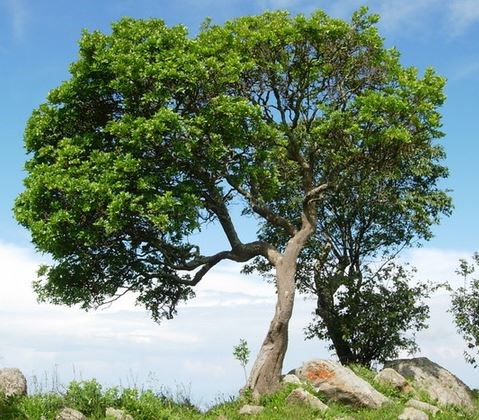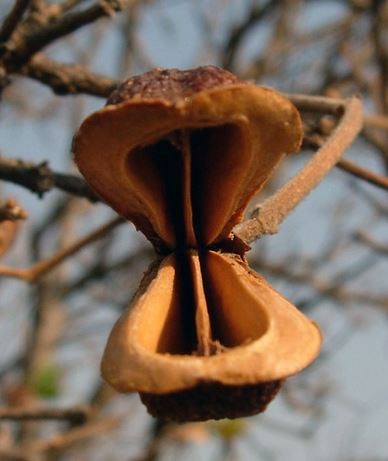Karura Forest #21: Wild Jasmine
 The cache is hidden in the base of this fragrant and multi-use tree alongside the Turaco Trail which runs between Junctions 8 & 9 in the southern part of the forest.
The cache is hidden in the base of this fragrant and multi-use tree alongside the Turaco Trail which runs between Junctions 8 & 9 in the southern part of the forest.
To access the cache: see GC5FF98 Karura Forest #19: Turaco Path for the relevant information and waypoints.
For background information on Karura Forest including access, fees, opening times, features, a detailed trail map and useful links, see GC4PD3V Karura Forest #1: Intro, Info & Entry.
Schrebera alata, also known as wing-leafed wooden pear, is in the Oleaceae family and grows as scattered trees up to 20m tall in the margins and clearings of riverine or evergreen forests and open woodland at 1,000-1,600m (3,300-5,200') asl throughout East, Central & Southern Africa. The name alata (Latin) means 'winged' and refers to the fruit. In East Africa, it is often associated with Podocarpus, Juniperus and Oleae species.
This quick-growing small-medium sized tree or scrambling shrub has a grey-brown bark and compound leaves with 1-2 pairs of leaflets plus a terminal leaflet which are shiny  dark green above and paler green below. The waxy, fragrant (especially in the evening) trumpet-shaped white or pink flowers appear in clusters with tufts of purplish hair and attract bees, hawkmoths and dusk-flying butterflies. The shiny green pear-shaped fruit turn brown when mature becoming woody and splitting open to release winged seeds dispersed by the wind.
dark green above and paler green below. The waxy, fragrant (especially in the evening) trumpet-shaped white or pink flowers appear in clusters with tufts of purplish hair and attract bees, hawkmoths and dusk-flying butterflies. The shiny green pear-shaped fruit turn brown when mature becoming woody and splitting open to release winged seeds dispersed by the wind.
In Kenya the wood is used mainly for construction in house building, poles, furniture and tool handles. It is suitable for joinery, interior trim, mine props, vehicle bodies, sporting goods, toys, novelties, agricultural implements, turnery, pattern-making, veneer and plywood. It is an excellent source of firewood for highland farmers and used for charcoal production.
 Several plant parts are used in traditional medicine. Pounded twigs and leaves are used to treat tooth complaints, cough, and (as a wash in water) ulcers. Leaves are chewed to treat sore throat and headache, and leaf decoctions used as a vapour bath to treat headache, coughs & colds, fever, and as an emetic, oxytocic and tonic. However, although tests in rats showed bark extracts had analgesic properties, there was also evidence of some toxicity - as liver damage.
Several plant parts are used in traditional medicine. Pounded twigs and leaves are used to treat tooth complaints, cough, and (as a wash in water) ulcers. Leaves are chewed to treat sore throat and headache, and leaf decoctions used as a vapour bath to treat headache, coughs & colds, fever, and as an emetic, oxytocic and tonic. However, although tests in rats showed bark extracts had analgesic properties, there was also evidence of some toxicity - as liver damage.
It also makes a fine decorative or ornamental garden tree.
Call
Send SMS
Add to Skype
You'll need Skype CreditFree via Skype